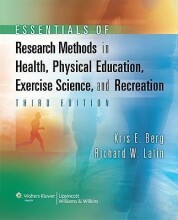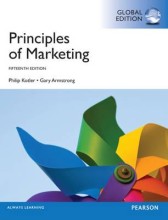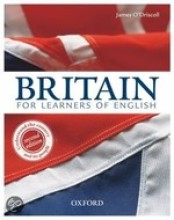Introductory concepts
48 important questions on Introductory concepts
When the Diaphragm contracts what happens to its shape and position?
- it flattens and moves down
How is air drawn into the lungs?
- An increase in space within the chest cavity occurs when the Diaphragm flattens and the intercostal muscles expand the rib cage.
- an increase un space means the air pressure is lower inside than outside, causing a rush of air into the lungs.
What do Stretch receptors within the Bronchi and Bronchioles do?
- Prevent excess inspiration
- Higher grades + faster learning
- Never study anything twice
- 100% sure, 100% understanding
If Carbon dioxide levels get too high, what happens to increase the rate of ventilation and remove the access Carbon Dioxide?
- carbonic acid is released which causes an increase in Hydrogen ions. This rise stimulates increased ventilation.
What are respiratory volumes?
Cardiac Volumes: The amount of blood in the left ventricle before the contraction phase of a heart beat is called what?
Describe Cardiac Output
At rest what is the average stroke volume?
Circulatory system: What are all the constituents which make up the circulatory system?
- Heart
- Blood
- Arteries
- Arterioles
- Capillaries
- Venules
- Veins
List the three circulatory processes within the body
- Systemic
- Pulmonary
- Coronary
Name the largest blood vessel in the body
In which two parts of the cycle are the ventricles in systole?
- RT interval
- ST segment
What are the 4 parts to reaction time?
- The stimulus has to activate the particular sensory system
- The stimulus has to travel from the sensory system to the brain
- The brain has to process the stimulus
- The relevant information is then sent to the relevant muscle/groups
What strategies/factors affect reaction time?
- Age
- Gender
- Limbs used
- Personality
- Body temp
- Sensory system receiving the stimulus
How do you improve reaction time?
- Practice
- Mental Rehearsal
- Experience
- Cue detection
- Improve physical fitness
- Concentration/Selective attention
Why is the wall of the left ventricle thicker?
The period where the heart is at rest is called what?
What happens during the P wave?
What is the job of the AV node?
Describe the end systolic volume
How does the circulatory system work?
- Systemic circulation carries blood around the body
- Pulmonary circulation carries blood to the lungs
- Coronary circulation provides the heart with its own supply of blood.
What are the problems for drugs in sport?
- It could affect your health conditions
- It is illegal and can be sentenced if taken and lied about.
How could you stop drugs in sport?
- educate more about the consequences that it has on you
- do an olympic games with and without drugs
What are isotonic contractions?
- The contractions are dynamic contractions as the muscles shorten or lengthen during action
What are isometric contractions?
- The contractions are static contractions as the muscles do not change in length during action
What are the three Thorndyke's Laws?
- Law of Effect: Positive Reinforcement increases the chance of the same response to occur
- Law of Exercise: The more often the response is reinforced the stronger the learning bond
- Law of Readiness: The performer must have reached an appropriate mental and physical maturation
What are the main ideas of operant conditioning?
- Shaping behaviour through trial and error
- Reinforcing the response
- Structuring a situation
What are the main ideas of the Operant learning theory?
- Skill is presented as a whole problem
- Relies on the performers motivation, intelligence and maturity.
What are the main ideas of the Observational learning theory?
- Attention= brief and meaningful
- Retention= need to form a mental picture of what the have observed
- Motor Reproduction= must be capable of copying the skill
- Motivation= must be motivated to learn
What is Shema Theory?
What is a executive programme?
- Enables a skill to be performed
- Can be made up of a longer number of subroutines
- Must be adaptable so that it can be altered when the environment or surrounding changes.
What is the Open loop control?
- They are automatic and no thought is necessary
What is the Closed loop control?
- This applies to ongoing movements
- only part of the info necessary to complete a movement is sent to the effector organs
- The remaining info is sent following feedback via kinaesthesis
How do we increase positive transfer?
- Emphasise on all the similar skills
- Participate in similar sports
- Repetition
- Reinforcement
How do we reduce Negative transfer?
- Emphasise on what is different
- Avoid sports that are with non similar techniques
- Punish
What is information processing?
What is the ccc stimulated by?
- Proprio receptors=Movement
- Chemoreceptors=Chemical Changes
- Baroreceptors=Pressure
What is Hormonal control?
What is Intrinsic control?
What are the other factors that affect heart rate?
- Age
- Gender
- Fitness
What is the diastole in the cardiac cycle?
- lasts 0.5 seconds
- represents the relation phase
- Filling of the atria
- Av valves close
- High blood pressure causes passive blood flow
Describe the cardiac cycle
What are the differences between a skill and a ablility?
- Skill is something that can be learned
- an ability is something that is genetically determined by your parents
What is the Cognitive Stage?
- Initial Phase
- Learner is thinking about the skill to perform a mental picture of the motor programme/plan and linking sub routines
- Can occur directly after the demonstration
What is the Associative Stage?
- Practice phase
- You can remain in this stage for a number of years
- Begins to see errors
- Demonstration, Mental Rehearsal and Positive Reinforcement are important in this stage
What is the Autonomous stage?
- Expert Phase
- Doesn't go much thought into the skill they will do this skill automatically
What is the function of the respiratory system?
What is external respiration?
The question on the page originate from the summary of the following study material:
- A unique study and practice tool
- Never study anything twice again
- Get the grades you hope for
- 100% sure, 100% understanding
































